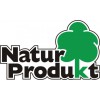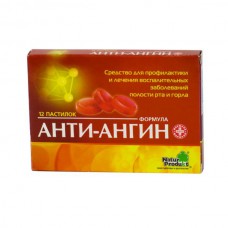Expiration date: 10/2026
Composition and form of issue:
Tablets for resorption. 1 tablet contains:
chlorhexidine diacetate 2 mg
tetracaine hydrochloride 0, 20 mg
ascorbic acid 50 mg
excipients: levomenthol saccharin sorbitol silicon dioxide magnesium stearate flavor "anise" flavor "mint" azorubin dye (E-122)
in blisters 2, 4, 6, 8, 10 or 12 PCs. in a pack of cardboard 1, 2, 3, 4, 5, 10 or 15 blisters.
Lozenges. 1 lozenge contains:
chlorhexidine diacetate 2 mg
tetracaine hydrochloride 0, 20 mg
ascorbic acid 50 mg
excipients: sugar, glucose syrup, natural oil of aromatic additive "mint" dye E-120 water
in blisters or strips 2, 4, 6, 8, 10 or 12 PCs. in a pack of cardboard 1, 2, 3, 4, 5, 10 or 15 blisters or a strip.
Description of dosage form:
Tablets for resorption: flat, with a beveled edge, from pale pink to reddish-pink with lighter and darker inclusions, with a specific smell. On both sides of the tablet engraved " NP " on the background of the tree.
Pastilles: flat round, with a beveled edge, with a rough surface, from pink to pinkish-red color, with a specific smell. Allowed uneven coloring, the presence of air bubbles in the caramel mass and slight roughness of the edges.
Description of pharmacological action:
The antibacterial effect of chlorhexidine is carried out due to non-specific binding to phospholipids of bacterial cell membranes. Chlorhexidine may have bactericidal and bacteriostatic effects, mainly against gram-positive bacteria and Candida albicans, and to a lesser extent against gram-negative bacteria. Chlorhexidine is particularly active against Streptococcus mutans, Streptococcus salivarius, Escherichia coli, Selenomonas spp. and anaerobic bacteria. The drug is much less effective against such types of microorganisms as Streptococcus sanguis, Proteus, Pseudomonas, Klebsiella veillonella.
The anesthetic tetracaine has a local anesthetic effect.
Ascorbic acid is a cofactor in the process of collagen synthesis and tissue regeneration, enhances immune responses and reduces capillary permeability, thereby reducing inflammation and swelling of the mucous membranes of the mouth and pharynx.
Indications:
Prevention and treatment of infectious and inflammatory diseases of the oral cavity and throat (stomatitis, gingivitis, tonsillitis, pharyngitis, periodontal disease, the initial stage of angina, the condition after tonsilectomy or tooth extraction).
Contraindications:
- hypersensitivity to the drug components
- children under 5 years old.
For tablets for resorption (optional):
The first trimester of pregnancy.
With caution:
II and III trimester
- lactation
- diabetes
- glucose-6-phosphate dehydrogenase deficiency
- hemochromatosis
- sideroblastic anemia
- thalassemia
- hyperoxaluria
- Oxalis
- nephrolithiasis.
Side effect:
Allergic reaction.
Intensive consumption can cause damage to the tooth enamel (resorption tablets).
Drug interaction:
Tetracaine reduces the antibacterial activity of sulfanilamide preparations. Vasoconstrictors prolong the effect and reduce the toxicity of tetracaine.
Ascorbic acid increases the concentration of benzylpenicillin and tetracycline in the blood, increases the risk of crystalluria in the treatment of salicylates and sulfanilamides short-acting, reduces the concentration of oral contraceptives in the blood.
Dosage and administration:
Locally, keep in mouth until completely absorbed.
Adults and children from 15 years: table 6./lozenges per day with an interval of 2 hours.
Children from 10 to 15 years: 4 table./lozenges per day with an interval of 3 hours.
Children from 5 to 10 years: 3 table./lozenges per day with an interval of 4 h.
Overdose:
Symptoms: dizziness, General weakness, cyanosis, excitement, anxiety, muscle tremor, respiratory failure, nausea, vomiting.
Treatment: gastric lavage, saline laxative symptomatic therapy.
Special instruction:
It is not recommended to use simultaneously with drugs for the treatment of the oral cavity and pharynx containing iodine (Lugol solution, povidone iodine). Ascorbic acid, which is part of the drug, may change the results of some laboratory tests, which should be reported in the analysis.
Anti-Angin
Formula
(Tetracaine
+
Chlorhexidine
+
Ascorbic
acid)
- Brand: NaturProdukt




